Easy Marvel Character Evolution Explained for New Fans
Category: Marvel
Discover How Marvel Characters Evolve Easily and Clearly
If you’re a casual Marvel fan or a newcomer trying to make sense of the often complex character journeys, you’ve landed in the right place. Marvel characters have rich, multi-layered stories that can sometimes feel overwhelming, especially when they evolve through decades of comics, movies, and shows. You want simple, standalone explanations—not the intricate comic lore or confusing timelines. Perhaps you’ve tried reading character bios before but found them too technical or dense. This post breaks down Easy Marvel character evolution into digestible, straightforward narratives, highlighting key changes in popular heroes without jargon or spoilers that weigh you down. We’ll guide you through evolution milestones that matter, giving you a quick grasp of who these heroes are now and what shaped them. Unlike other articles that assume familiarity or dive too deep, this guide respects where you’re coming from and makes every section independently understandable. So if you’ve ever wondered how heroes like Spider-Man, Iron Man, or Captain Marvel transformed over time without needing comic book scholar knowledge, read on. We make Marvel’s evolving universe accessible, fun, and perfect for casual fans eager to keep up without getting lost.
- Discover How Marvel Characters Evolve Easily and Clearly
- What Does Character Evolution Mean in Marvel? Defining Key Concepts in Simple Terms
- How Marvel Characters Grow: Common Evolution Types
- Spider-Man’s Easy Evolution: From Friendly Neighbor to Iconic Hero
- Iron Man’s Journey: From Genius Billionaire to Hero with Heart
- Captain Marvel: The Rise of a Cosmic Hero Made Simple
- Evolving Sidekicks and Supporting Characters: Why They Matter (e.g., Falcon to Captain America)
- Marvel Cinematic Universe Adaptations: How Evolution Differs from Comics
- Key Moments That Mark Character Changes: Understanding Origins, Loss, and Redemption
- How to Follow Easy Character Evolution Without Getting Overwhelmed
- Tips for Casual Fans: Which Characters to Start With and Where to Find Simple Stories
What Does Character Evolution Mean in Marvel? Defining Key Concepts in Simple Terms
When we talk about character evolution in Marvel, we’re simply referring to the ways a character changes over time—whether through growth, challenges, or new roles. It’s important to understand that evolution isn’t just about physical changes or costume updates; it’s about the journey a character takes that shapes who they are and how they act. This includes their morals, motivations, relationships, and sometimes even their powers or identities.
To break it down clearly, consider these key ideas behind Marvel character evolution:
- Personal Growth – How a hero learns lessons or overcomes fears, making them more mature or wise.
- Changing Circumstances – New experiences, losses, or triumphs that force the character to adapt.
- Role Shifts – Moving from sidekick to leader, or from hero to anti-hero, which changes their place and approach in the story.
- Power Development – Gaining new abilities or losing old ones that affect how they fight and interact.
- Legacy and Identity – Sometimes, evolution means passing the mantle to a new character or redefining what it means to be that hero.
By focusing on these core concepts, you can easily follow how your favorite Marvel characters evolve without getting tangled in complex backstory or comic book specifics. This simple framework helps casual fans and newcomers track change clearly, making the Marvel universe feel accessible and engaging right away.
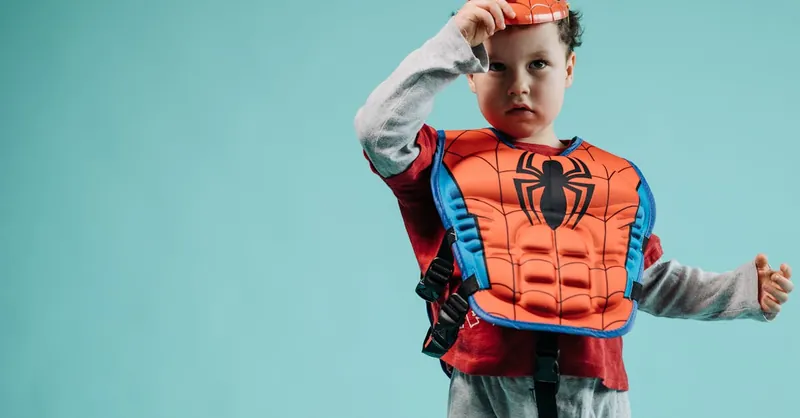
Image courtesy of Pavel Danilyuk
How Marvel Characters Grow: Common Evolution Types
Marvel characters evolve in ways that make their stories compelling and relatable, even if you’re new to their universes. While every hero has a unique path, most character growth falls into a few common types that are easy to recognize and follow. Understanding these basic evolution types gives you a clear picture of how characters develop over time without needing deep comic knowledge.
1. Power Upgrades: More Than Just New Abilities
Many Marvel heroes evolve by gaining or improving their powers. This can happen through training, scientific experiments, magic, or alien tech. Power changes often shift how a character fights and the role they play in their story. For example:
- Spider-Man develops new spider-sense skills and web-shooters that expand his abilities.
- Iron Man continuously upgrades his armor to face bigger threats.
- Power upgrades keep stories fresh and show heroes adapting to new challenges.
2. Moral Shifts: When Heroes Face New Choices
Characters often grow by changing what they believe or how they act morally. This might mean becoming more heroic, darker, or walking a fine line as anti-heroes. These moral shifts shape the stories and sometimes surprise fans:
- Captain America has wrestled with loyalty and ideals during ethical conflicts in different story arcs.
- Wolverine struggles between his violent past and his desire for redemption.
- Such shifts highlight internal battles and the complexity behind Marvel heroes.
3. Identity Changes: New Faces, Same Heroic Spirit
Sometimes evolution means a character’s identity or role changes—either because they pass their superhero mantle to someone new or take on a completely different persona. These identity changes keep the Marvel universe dynamic and inclusive:
- When Miles Morales takes up the Spider-Man mantle, he brings fresh perspectives tied to his background.
- Thor has experienced changes from god of thunder to different versions, reflecting new themes in his storyline.
- Identity evolution helps fans connect with heroes in new ways and keeps the stories relevant.
By recognizing these types—power upgrades, moral shifts, and identity changes—you can quickly grasp how Marvel characters grow, making their journeys easier and more enjoyable to follow without a steep learning curve. This approach unlocks the heart of Marvel storytelling for casual fans and newcomers alike.
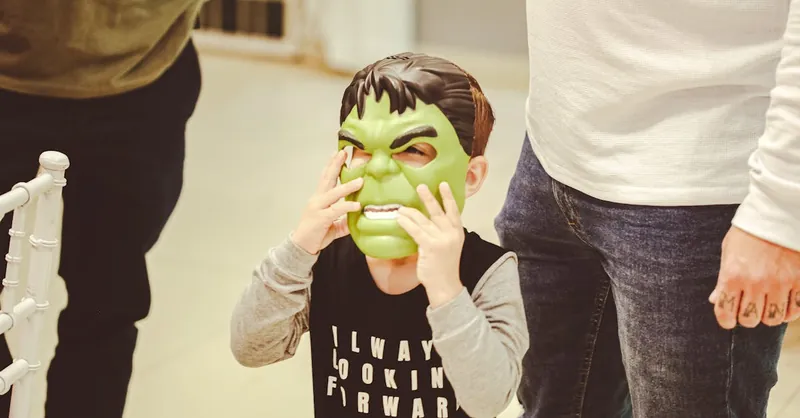
Image courtesy of Vidal Balielo Jr.
Spider-Man’s Easy Evolution: From Friendly Neighbor to Iconic Hero
Spider-Man’s journey is one of the most straightforward yet inspiring examples of Marvel character evolution, making it perfect for casual fans and newcomers. Starting as Peter Parker, an ordinary high school student, he gains his powers after being bitten by a radioactive spider. This moment sparks his transformation from a regular kid into a hero with incredible abilities—but his evolution goes well beyond just powers.
Here’s why Spider-Man’s growth is easy to follow and emblematic of Marvel’s storytelling approach:
- Relatable Origins – Peter’s struggles balance everyday problems like school, work, and family with his heroic responsibilities. This personal growth makes him feel real and approachable.
- Moral Foundations – His iconic motto, “With great power comes great responsibility,” highlights his journey from a reckless teenager to a selfless protector. This clear moral shift explains why Spider-Man remains beloved across generations.
- Consistent Role – Although different versions exist (including Miles Morales and Gwen Stacy as Spider-Woman), Peter Parker’s core identity as the friendly neighborhood hero persists, demonstrating how role stability can simplify evolution.
- Power Growth – Over time, Spider-Man develops enhanced abilities like spider-sense, wall-crawling, and advanced web-shooters, showing a natural power upgrade without overwhelming complexity.
In essence, Spider-Man’s evolution is about growing into responsibility while staying true to his roots—a simple yet powerful narrative that resonates with anyone new to Marvel. This makes him an ideal starting point for understanding how Marvel characters can evolve clearly and meaningfully without complicated backstory overload.
Image courtesy of Pavel Danilyuk
Iron Man’s Journey: From Genius Billionaire to Hero with Heart
Iron Man’s evolution is a classic example of how Marvel characters mature beyond their origins, blending personal growth with evolving roles and motivations. Tony Stark starts as a brilliant but arrogant billionaire industrialist—famous for his genius-level intellect, technological mastery, and flashy lifestyle. However, his true transformation begins when he faces a life-threatening crisis that forces him to rethink his priorities and use his talents for a greater purpose.
Key highlights of Iron Man’s character evolution include:
- From Self-Interest to Self-Sacrifice – Initially focused on wealth and fame, Tony’s near-death experience leads him to build the Iron Man suit, marking his shift into a hero who willingly risks his life to protect others.
- Technological Innovation as a Tool for Good – His ongoing upgrades to the Iron Man armor show continuous power development, reflecting how he adapts to new threats with smarter, more powerful tech.
- Growing Emotional Depth – Beyond the tech genius, Tony evolves emotionally by facing his vulnerabilities, grappling with guilt, and learning the value of teamwork and responsibility—making him a more relatable and complex hero.
- Leadership and Legacy – Over time, Iron Man steps into leadership roles within the Avengers and influences newer heroes, showing how a character’s role can shift from lone innovator to team-driven protector.
This clear narrative—from a selfish genius to a hero with heart—makes Iron Man’s story accessible and compelling for casual fans. Understanding this simple but powerful evolution helps newcomers connect with both the character’s flaws and strengths, illustrating how Marvel crafts relatable heroes whose growth feels natural and inspiring without complicated backstory overload.
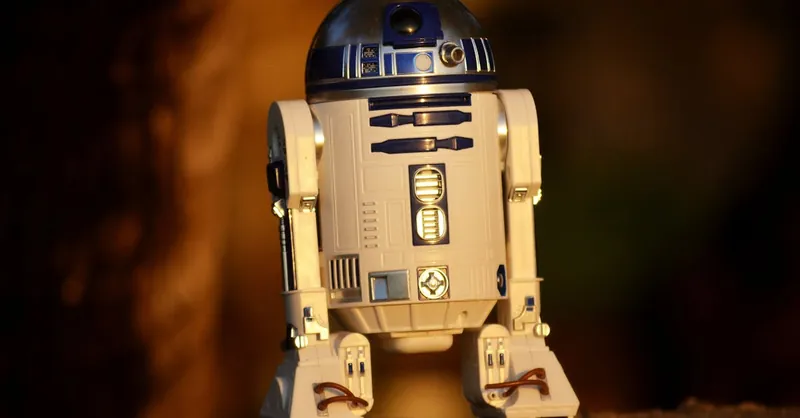
Image courtesy of LJ Checo
Captain Marvel: The Rise of a Cosmic Hero Made Simple
Captain Marvel’s evolution is a fantastic example of a Marvel character growing from human roots into a powerful cosmic force, all while maintaining relatable themes of identity and purpose. Carol Danvers begins as a skilled Air Force pilot with a strong sense of duty, and her story evolves as she gains extraordinary powers after an explosive encounter with alien technology. This transformation propels her into the wider Marvel universe, taking on the role of a protector not just of Earth but of entire galaxies.
Here’s what makes Captain Marvel’s journey easy to follow and compelling for newcomers:
- Human Origins to Cosmic Power – Carol’s story starts grounded in human experience, which makes her relatable. Her evolution into Captain Marvel represents a clear power upgrade, transforming her into one of Marvel’s most powerful heroes without losing her personal drive.
- Strong Moral Compass – Throughout her journey, Carol’s motivations are shaped by her core values: courage, justice, and protecting the innocent. This moral evolution highlights how she grows into a confident leader who balances strength with responsibility.
- Identity and Legacy – Taking on the mantle of Captain Marvel connects Carol to a legacy of heroes but also marks a personal assertion of her own identity. This blend of past and self-discovery makes her character evolution both engaging and easy to understand.
- Expanding the Marvel Universe – Her rise as a cosmic hero introduces casual fans to the larger Marvel cosmos—aliens, intergalactic conflicts, and universal stakes—all explained through Carol’s straightforward perspective.
By focusing on Carol Danvers’ transformation from an everyday pilot to a cosmic champion, Captain Marvel’s story serves as a clear and inspiring example of Marvel’s character evolution at its best. This narrative highlights power development, moral clarity, and identity growth to make her journey accessible, exciting, and perfect for casual fans eager to explore Marvel’s vast universe.
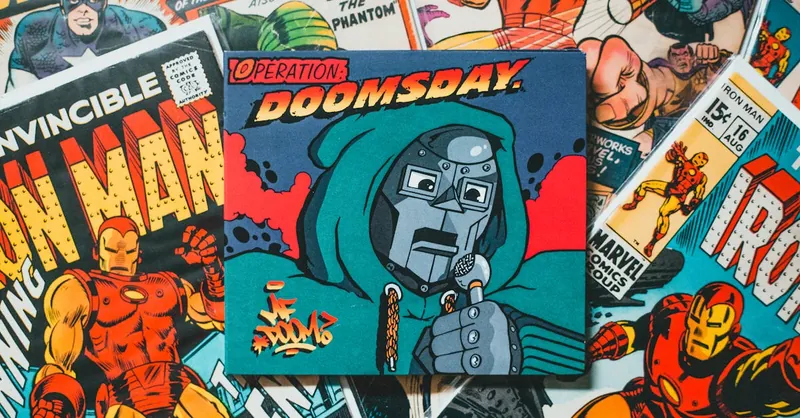
Image courtesy of Erik Mclean
Evolving Sidekicks and Supporting Characters: Why They Matter (e.g., Falcon to Captain America)
In Marvel stories, evolution isn’t limited to the main heroes—sidekicks and supporting characters often undergo some of the most meaningful growth, making them essential to the larger narrative. These characters frequently transform from loyal companions or secondary figures into leaders and heroes in their own right. This shift not only expands the Marvel universe but also offers fresh perspectives and storylines that resonate strongly with casual fans and newcomers alike.
Take the example of Sam Wilson, originally known as the Falcon. Starting as Captain America’s trusted ally with his own unique skills and values, Sam’s journey evolves significantly when he takes up the Captain America mantle. This evolution is powerful because it represents:
- Role Shift – Moving from a sidekick with specialized talents to the symbol of American heroism, showing how characters can grow beyond supporting roles into the spotlight.
- Legacy and Identity – Sam embraces Captain America’s legacy while bringing his own experiences and beliefs to the role, underscoring Marvel’s theme of legacy being both a gift and a responsibility.
- Moral Growth – His evolution highlights important themes such as social justice and personal integrity, enriching the moral landscape of the Marvel universe.
- Relatability and Accessibility – For casual viewers, Sam’s story is straightforward: a loyal friend becomes a hero who stands for something bigger, making complex ideas about identity and legacy easier to understand.
Supporting characters like Falcon prove that evolution in Marvel is not just about gaining powers but also about growing in leadership, purpose, and values. This dynamic makes the Marvel universe more inclusive and compelling for newcomers, showing that anyone—sidekick or hero—can evolve into a meaningful figure worth following.
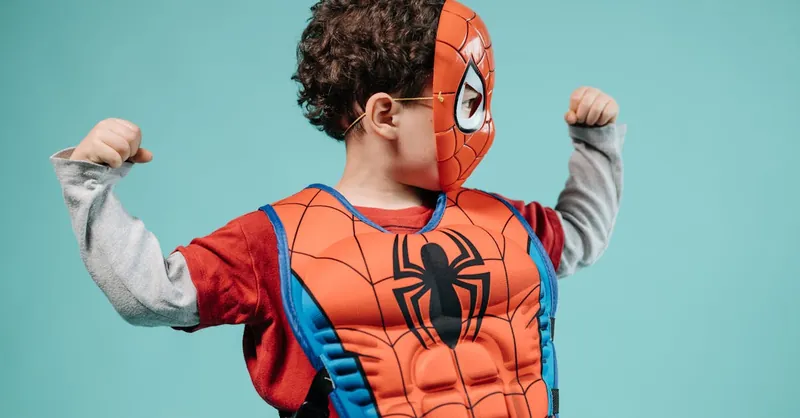
Image courtesy of Pavel Danilyuk
Marvel Cinematic Universe Adaptations: How Evolution Differs from Comics
When exploring Marvel character evolution, it’s important to understand that the Marvel Cinematic Universe (MCU) often adapts characters differently from their comic book origins. For casual fans and newcomers, this means the MCU provides a more streamlined and accessible version of character growth, designed for storytelling that fits movies and TV shows rather than decades of comic history.
Here’s how evolution in the MCU typically differs from the comics—and why this matters for easy understanding:
-
Simplified Origins and Motivations
The MCU tends to focus on clear, relatable origin stories and motivations that fit within a few films or series. Unlike comics that can span multiple story arcs and alternative universes, the MCU gives characters straightforward beginnings and development, making it easier for casual fans to follow their journey. -
Condensed Moral and Role Shifts
Characters in the MCU often undergo key moral shifts or role changes in a shorter timeframe, with major turning points highlighted for emotional impact. This compression helps viewers quickly grasp why heroes make certain choices without needing deep background knowledge. -
Visual and Narrative Consistency
Unlike comics, where costumes, powers, and personalities can vary widely over time, the MCU maintains consistent looks and character traits throughout its phases. This consistency strengthens recognition and allows fans to track evolution with minimal confusion. -
Selective Power Development
The MCU adapts powers to fit cinematic storytelling, often introducing new abilities gradually and only as needed to serve the plot. This keeps power upgrades manageable and logical for viewers who don’t follow complex comic explanations. -
Character Relationships and Legacy Simplified
Legacy characters and mantle passing—such as Falcon becoming Captain America—are portrayed with clear emotional beats that emphasize personal growth and symbolism. The MCU prioritizes character-driven moments over complex comic legacy details, simplifying the evolution process.
Understanding these MCU adaptation choices helps casual Marvel fans appreciate how evolution is tailored for accessibility and emotional clarity, distinct from the rich but complicated comic book history. This approach ensures you can enjoy character growth that feels natural and inspiring without needing to decode years of source material.
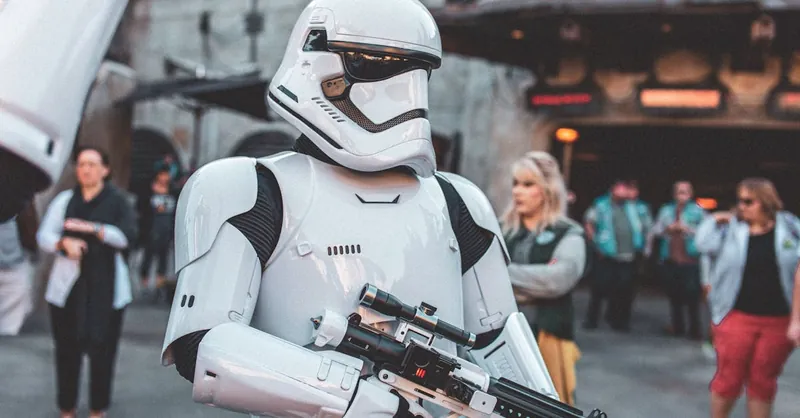
Image courtesy of Craig Adderley
Key Moments That Mark Character Changes: Understanding Origins, Loss, and Redemption
One of the easiest ways to follow Marvel character evolution is by focusing on key moments that define major changes in a hero’s journey. Marvel stories often hinge on pivotal events—such as powerful origins, tragic losses, or profound acts of redemption—that reshape a character’s path, motivations, and identity. Recognizing these moments helps casual fans and newcomers quickly grasp the essence of a character’s growth without needing to dive into complex timelines or extensive backstories.
Origins: The Spark That Ignites the Hero
Every Marvel hero starts somewhere, and their origin story is usually a simple, defining event that explains how they became who they are. This moment often involves:
- An accident or discovery of powers (e.g., Peter Parker’s spider bite).
- A defining personal choice to become a hero (e.g., Tony Stark building the Iron Man suit).
- An introduction to a new world or responsibility that sets the stage for growth (e.g., Carol Danvers encountering alien technology to become Captain Marvel).
Origins ground characters in relatable experiences while clearly establishing their powers and initial motivations, making their evolution easy to follow from the start.
Loss: The Catalyst for Growth and Change
Loss is a powerful storytelling tool Marvel uses to deepen characters emotionally and morally. Whether it’s losing a loved one, a close friend, or even an ideal, these moments challenge heroes and force them to evolve. Common types of loss include:
- Personal loss – Like Peter Parker losing Uncle Ben, which drives him to accept responsibility.
- Betrayal or failure – When heroes face setbacks that shake their beliefs or alliances.
- Sacrifice – Moments where characters give up something precious for the greater good, deepening their complexity.
These losses often lead to a moral shift or renewed sense of purpose, essential for understanding how a hero grows beyond their powers alone.
Redemption: Transforming Flaws into Strengths
Many Marvel characters experience some form of redemption arc, where they confront their past mistakes or darker impulses and choose a better path. This process highlights:
- Personal accountability – Owning up to earlier wrongs or misjudgments.
- Change in values – Shifting from selfish motives to altruism or justice.
- New roles or identities – Sometimes accepting leadership, mentoring, or becoming heroes in unexpected ways.
Redemption arcs are crucial for showing how Marvel characters evolve not just through external abilities but through inner transformation, making their journeys deeply human and inspiring.
By identifying these key moments—origins, loss, and redemption—you get a clear framework to track Marvel character evolution. This approach simplifies complex stories into memorable, standalone narratives that casual Marvel fans and newcomers can easily relate to and enjoy.

Image courtesy of Moe Magners
How to Follow Easy Character Evolution Without Getting Overwhelmed
Keeping track of Marvel character evolution can feel intimidating, especially when heroes have decades of stories across comics, movies, and shows. The key to following these changes without getting overwhelmed is to focus on simple, clear milestones and avoid diving too deep into every detail. Here are some practical tips for casual fans and newcomers to easily navigate Marvel character growth:
-
Focus on Big Moments
Instead of trying to absorb every storyline, identify key turning points such as origin events, major losses, or redemption moments. These milestones define how and why a character changes, giving you a solid understanding of their evolution without extra noise. -
Pay Attention to Core Themes
Look for straightforward themes like personal growth, moral challenges, or legacy taking over the hero’s role. These themes act as guideposts that connect different stories and adaptations, making it easier to see the character’s journey as a single narrative arc. -
Use Standalone Stories or Adaptations
Choose one version of the character—commonly the MCU portrayal or a recent comic run—and follow that story line to get a cohesive sense of evolution. Since these versions streamline character growth, they’re great starting points that don’t require juggling multiple timelines. -
Track Role and Identity Changes Clearly
When heroes change mantles or shift roles (like Falcon becoming Captain America), think of it as a fresh chapter that reflects new responsibilities and personality development. Viewing these shifts as distinct phases prevents confusion and highlights meaningful growth. -
Avoid Overloading with Details
Marvel’s richness comes from its complexity, but for easy evolution understanding, stick to broad strokes. Focus on what motivates the character now, key relationships that influence them, and major power or moral changes. Details can be explored later when you feel ready.
By applying these simple strategies, you can follow Marvel character evolution easily and enjoyably without getting lost in overwhelming lore or continuity. This approach helps casual fans stay engaged and confident in understanding how heroes grow, making the vast Marvel universe accessible for everyone.
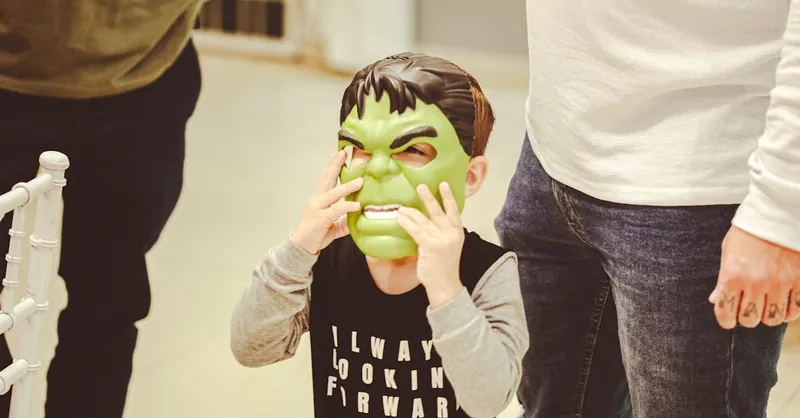
Image courtesy of Vidal Balielo Jr.
Tips for Casual Fans: Which Characters to Start With and Where to Find Simple Stories
If you’re new to Marvel or just a casual fan looking to dive into character evolution without getting overwhelmed, the best way to start is by focusing on heroes with clear, straightforward storylines and widely accessible media adaptations. Some characters are especially beginner-friendly because their narratives emphasize key growth moments, relatable themes, and minimal complex backstory. Here are top picks and where to find their simplest evolution stories:
- Spider-Man (Peter Parker or Miles Morales)
Start with Spider-Man because his story is about growth, responsibility, and identity in a very relatable way. The original Peter Parker arc, along with Miles Morales’ take, offers standalone comics and numerous family-friendly movies and animated shows. -
Where to watch/read: The 2002 Spider-Man movie, the Spider-Man: Into the Spider-Verse animated film, and popular recent comic series like Ultimate Spider-Man.
-
Iron Man (Tony Stark)
Tony Stark’s transition from billionaire playboy to heroic leader is easy to comprehend and well-presented in the Marvel Cinematic Universe (MCU), making it ideal for beginners interested in a blend of personal and technological evolution. -
Where to watch/read: The first Iron Man film (2008) and the Iron Man comic runs from the 2000s are great entry points.
-
Captain Marvel (Carol Danvers)
Captain Marvel’s rise from pilot to cosmic hero combines human and cosmic elements with clear motivations and moral growth, making her story accessible while expanding your Marvel universe knowledge. -
Where to watch/read: The MCU’s Captain Marvel film and the 2019 Captain Marvel comic series.
-
Falcon / Captain America (Sam Wilson)
Sam Wilson’s journey from Falcon to Captain America is a compelling example of legacy and identity evolution that is easy to follow through the MCU and standalone storylines. - Where to watch/read: The Disney+ series The Falcon and the Winter Soldier and recent comics focusing on Sam Wilson as Captain America.
Where to Find Simple, Standalone Marvel Stories
To avoid confusion and lost time, casual fans should seek out stories designed with standalone readability and clear arcs. Here’s how to find those:
- Recent Comic Runs and Graphic Novels: Many characters have modern graphic novels or runs written to be accessible to new readers. For example, Miles Morales: Spider-Man by Saladin Ahmed or Captain Marvel by Kelly Sue DeConnick. These provide clear beginnings and focused character evolution.
- MCU Films and Disney+ Series: These adaptations streamline complex comic lore into digestible narratives that highlight key growth moments and moral shifts suited for casual consumption.
- Animated Series and Movies: Titles like Ultimate Spider-Man or Avengers Assemble often focus on core personalities and simple story arcs ideal for newcomers.
By starting with these characters and their accessible media, casual Marvel fans can enjoy easy-to-follow character evolutions fueled by engaging stories and vivid adaptations—allowing you to appreciate Marvel’s rich universe without confusion or overload.
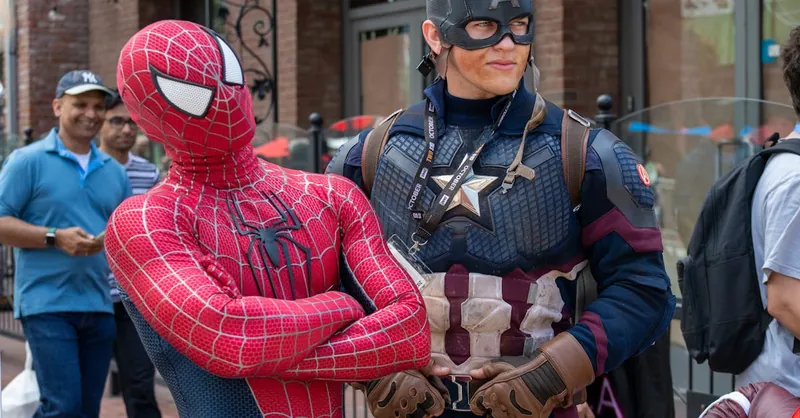
Image courtesy of Thom Gonzalez
